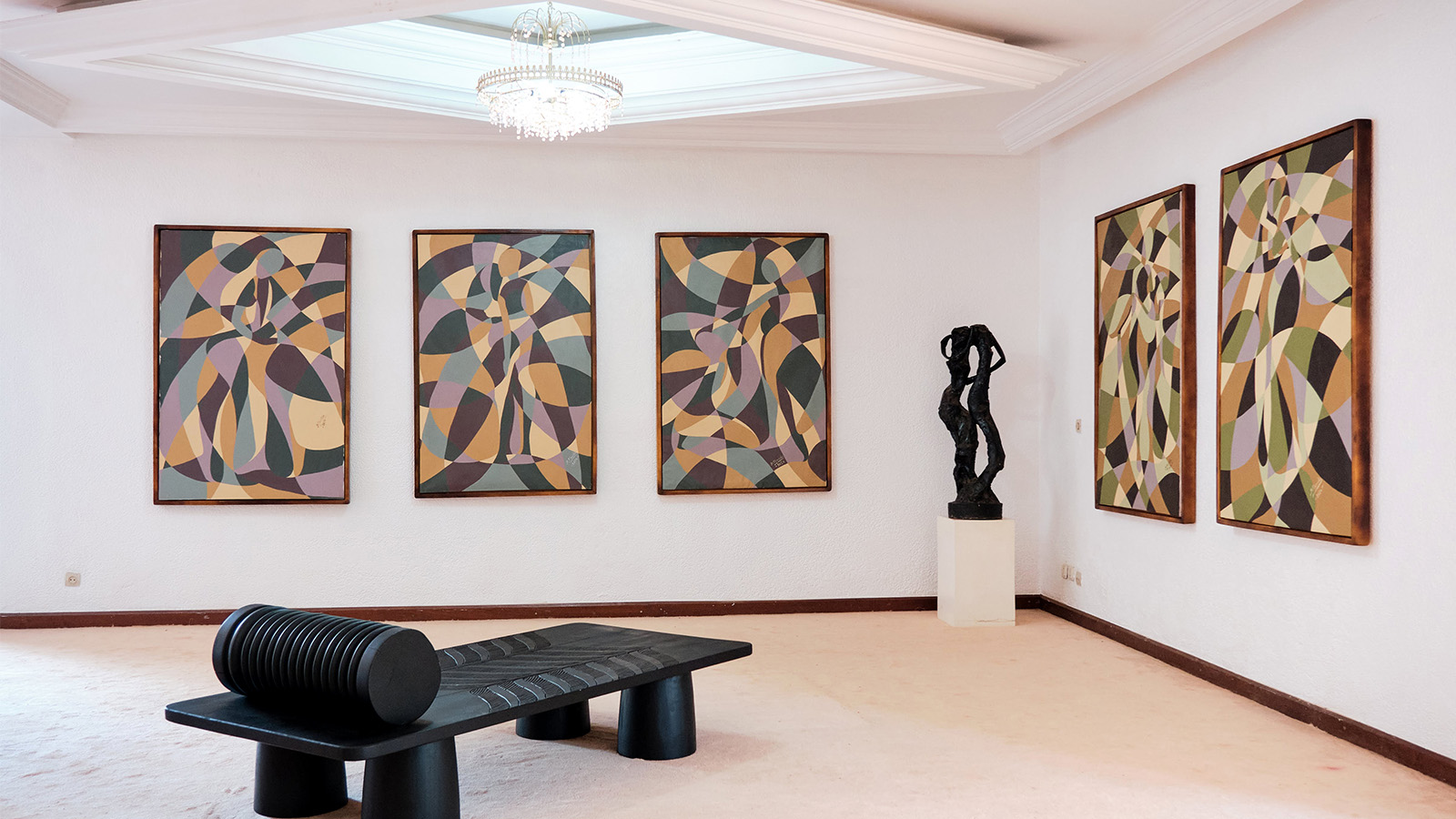
After the 1994 genocide, Rwanda's cultural scene suffered greatly as artists either stopped creating or fled the country. The absence left a void in Rwandans' lives and in the artistic community. Today, Rwanda finds itself in a new African landscape where economic growth offers hope for fairer prosperity, and this resurgence has injected fresh, youthful energy into the country – a vision that new cultural initiative Interlude Rwanda aims to nurture and promote.
Interlude Rwanda gives a voice to local creatives
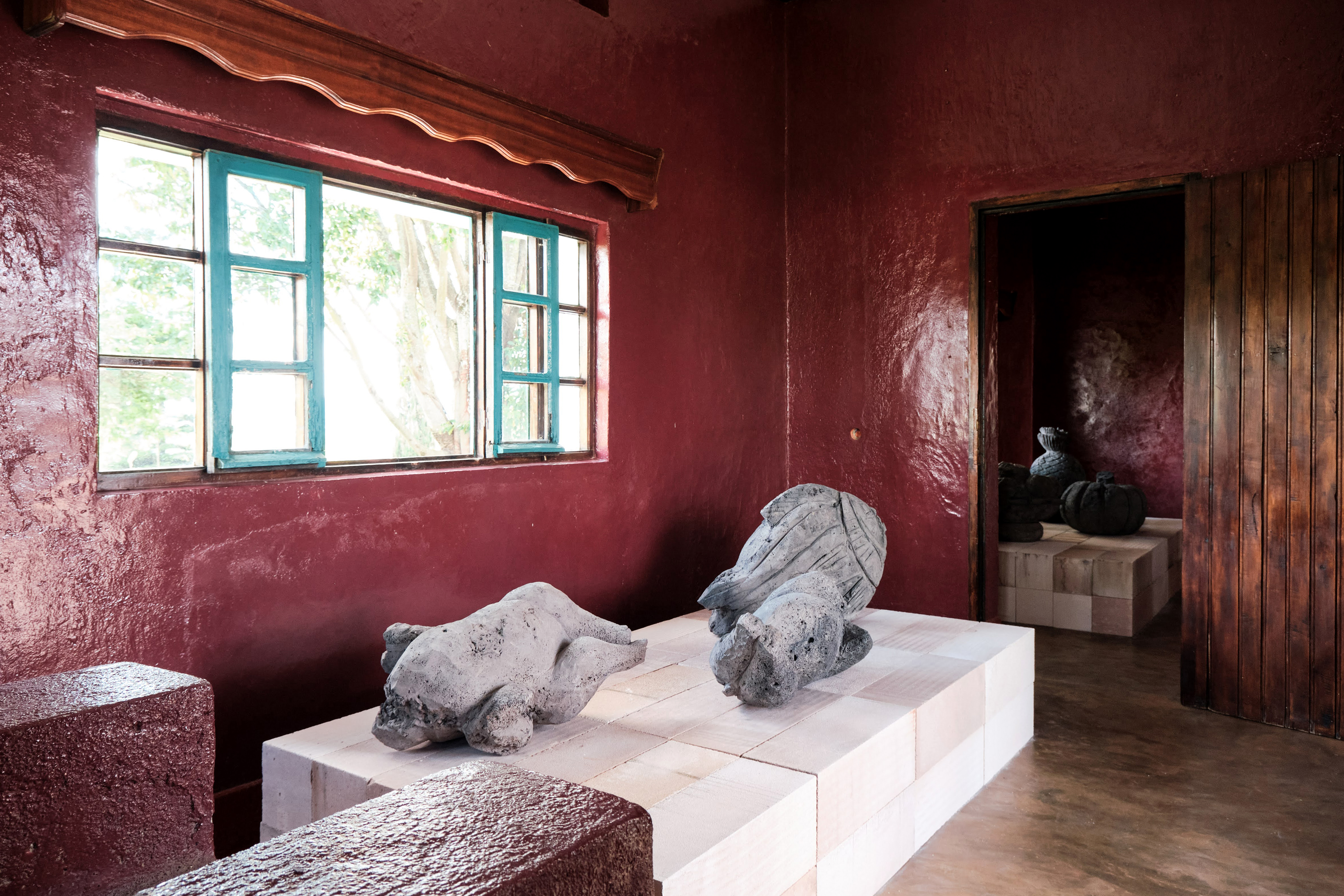
‘On my first visit, I was deeply moved by the learning opportunities here – seeing how resilient the people are as they heal and progress despite past trauma, all while preserving a sense of peace, is particularly inspiring in today's global context,’ says Cristina Romelli Gervasoni, co-founder of the initiative. ‘This motivated us to create an experience that offers a fresh perspective of the country, integrating architecture, design, art, and nature, and to empower local creatives by giving them a platform to flourish and realize their full potential.'
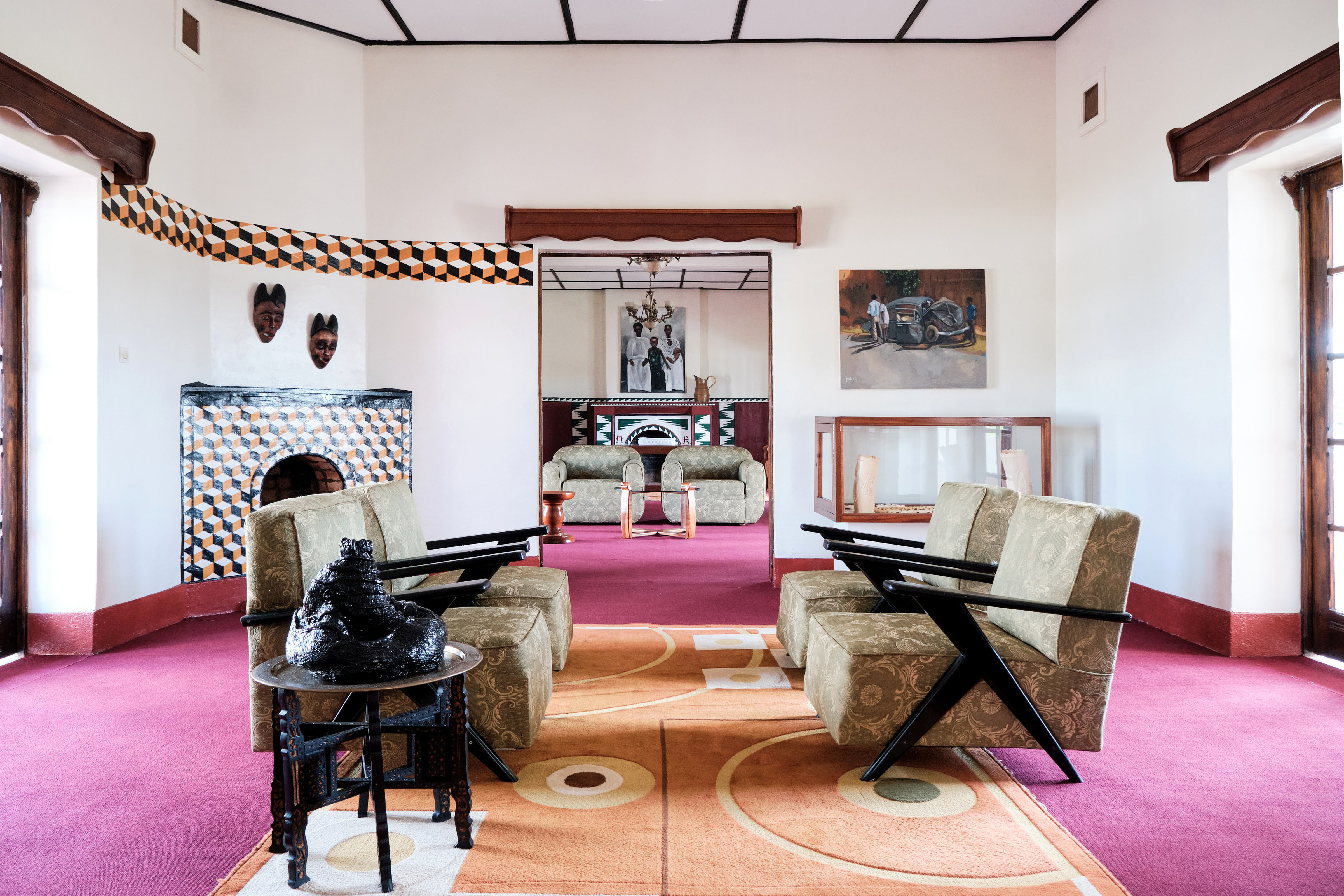
Interlude Rwanda is a biennial exhibition staged at various historical locations and landmarks across the country. In this inaugural edition, curated by Nicolas Bellavance-Lecompte (founder of Carwan Gallery and co-founder of the collectible design fair Nomad), three locations have been chosen for their significance, serving as a thread connecting the past, present, and future. Over a hundred works were commissioned from ten emerging and established local artists, designers, and architects, creating a new narrative through their artistic expressions.
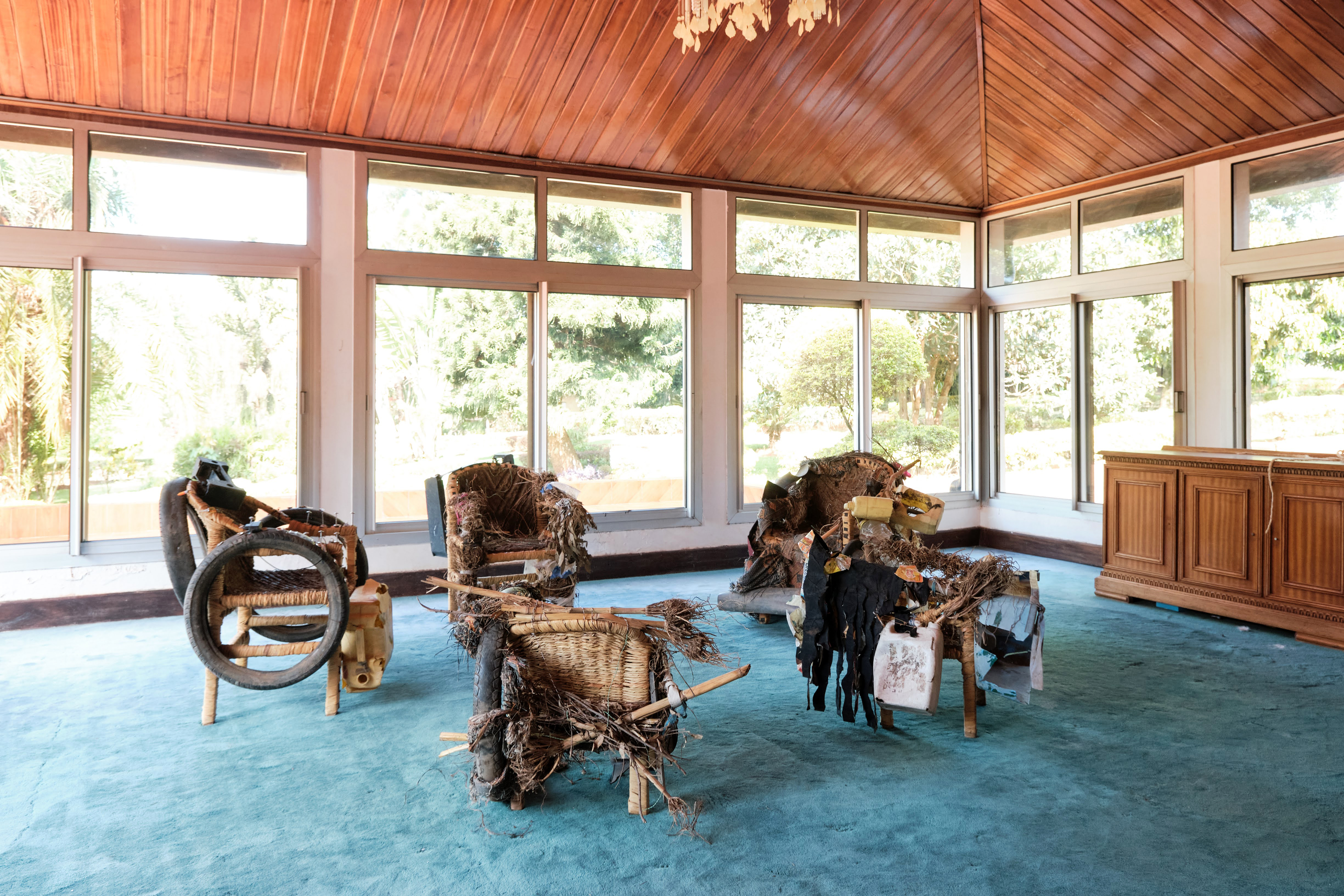
The Kings Palace Museum in Nyanza, the former capital, set the stage for the first chapter of the trilogy, ‘Past: Daily Monarchy’, featuring five artists in a unique African Art Deco domestic setting. Their works explore two facets of monarchy: the everyday, personal interactions in a royal environment and the grandeur and authority of royal life. By delving into the past, the artists question the objects, functions, and roles within a royal household, challenging traditions and creating a more welcoming atmosphere at the palace for all people.
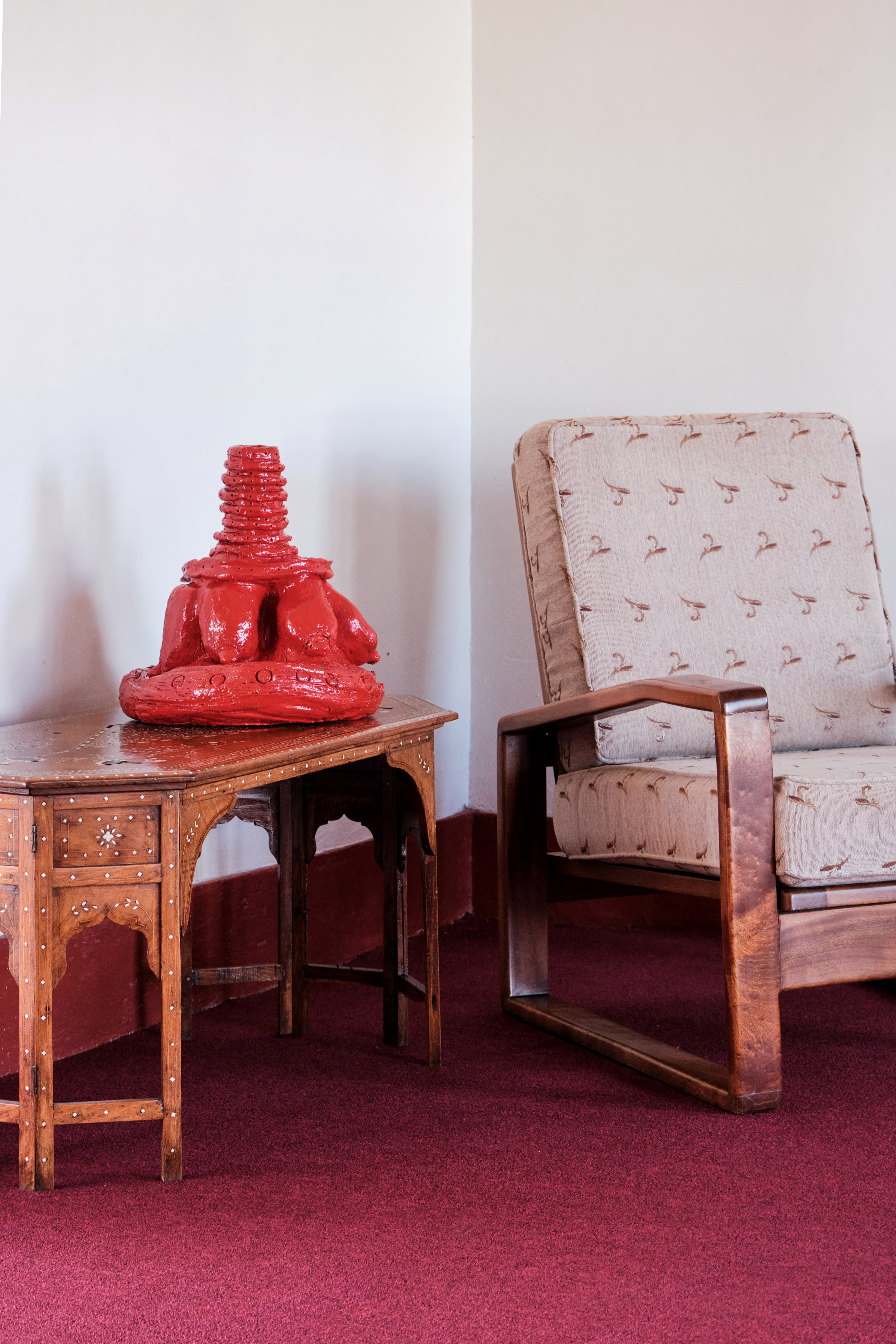
Renowned sculptor Medard Bizimana created a site-specific installation, ‘Nature Morte Royale’, in the former royal kitchens and pantry, using volcanic stones to sculpt oversized representations of traditional Rwandan culinary ingredients, emphasizing the theme of communal sharing.
Visual artist Dusabe King created a series of paintings, titled ‘Royal Anemoia’, inspired by the royal photography archive, highlighting unconventional moments from the king's life. they are intimate daily scenes like playing tennis and reading in his living room, as well as communal moments like curious onlookers gathered around a car accident scene from Rwanda's early automotive era. Unlike typical royal portraits, he vividly captured the atmosphere and challenges of that historical period.
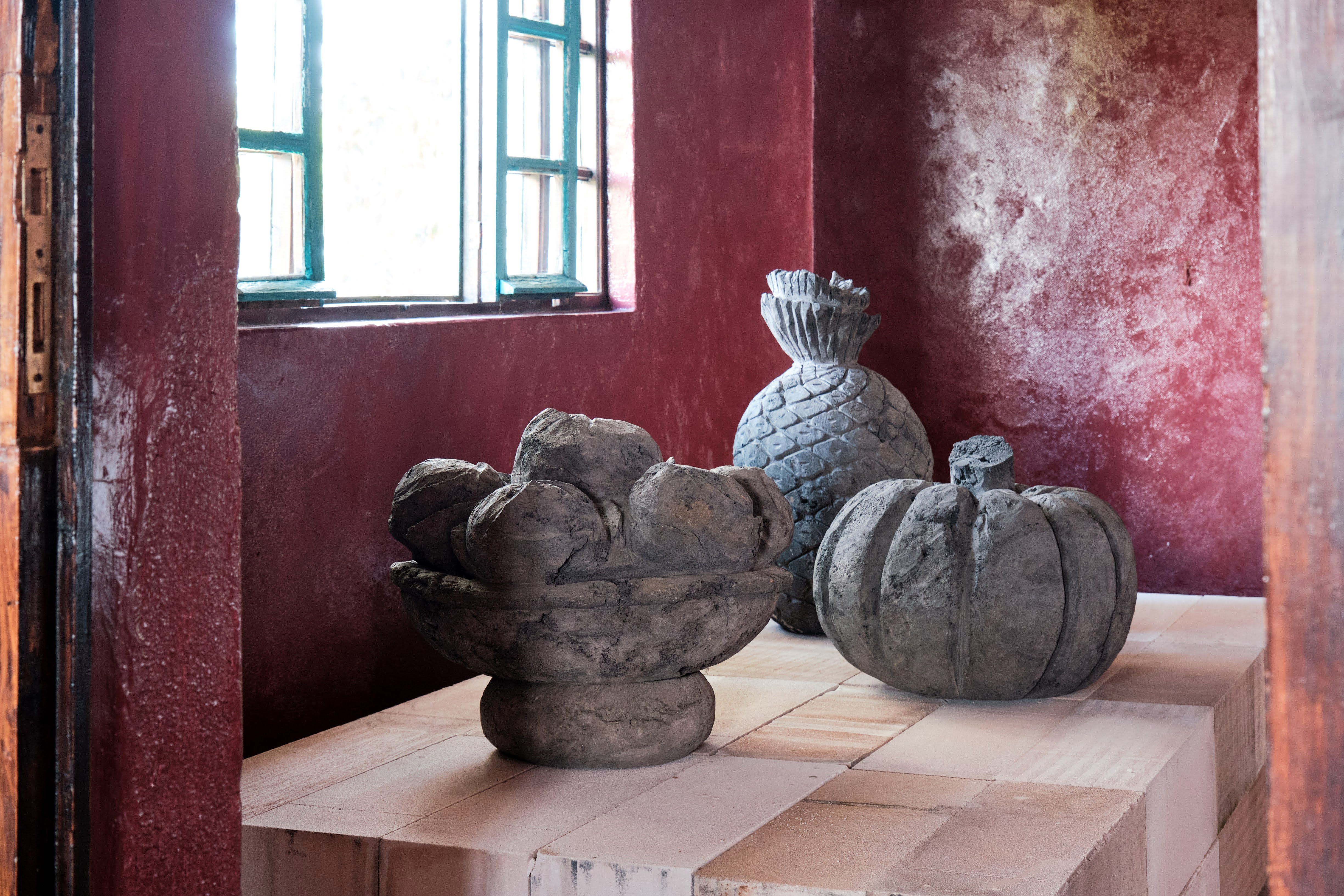
The second chapter, ‘Present: Talisman’, takes place at the former residence of ex-president Juvénal Habyarimana, now transformed into the Rwanda Art Museum. This site stirs mixed emotions among Rwandans due to its controversial role as a command center during the 1994 genocide against the Tutsi.
Bellavance-Lecompte explains, ‘We chose this location because it not only carries historical significance but may also be the country's first modern international-style mansion, believed to be constructed by Antoine Sebera in the 1970s, one of Rwanda's early architects trained in Germany. It's the intriguing architectural vision that caught my attention.’
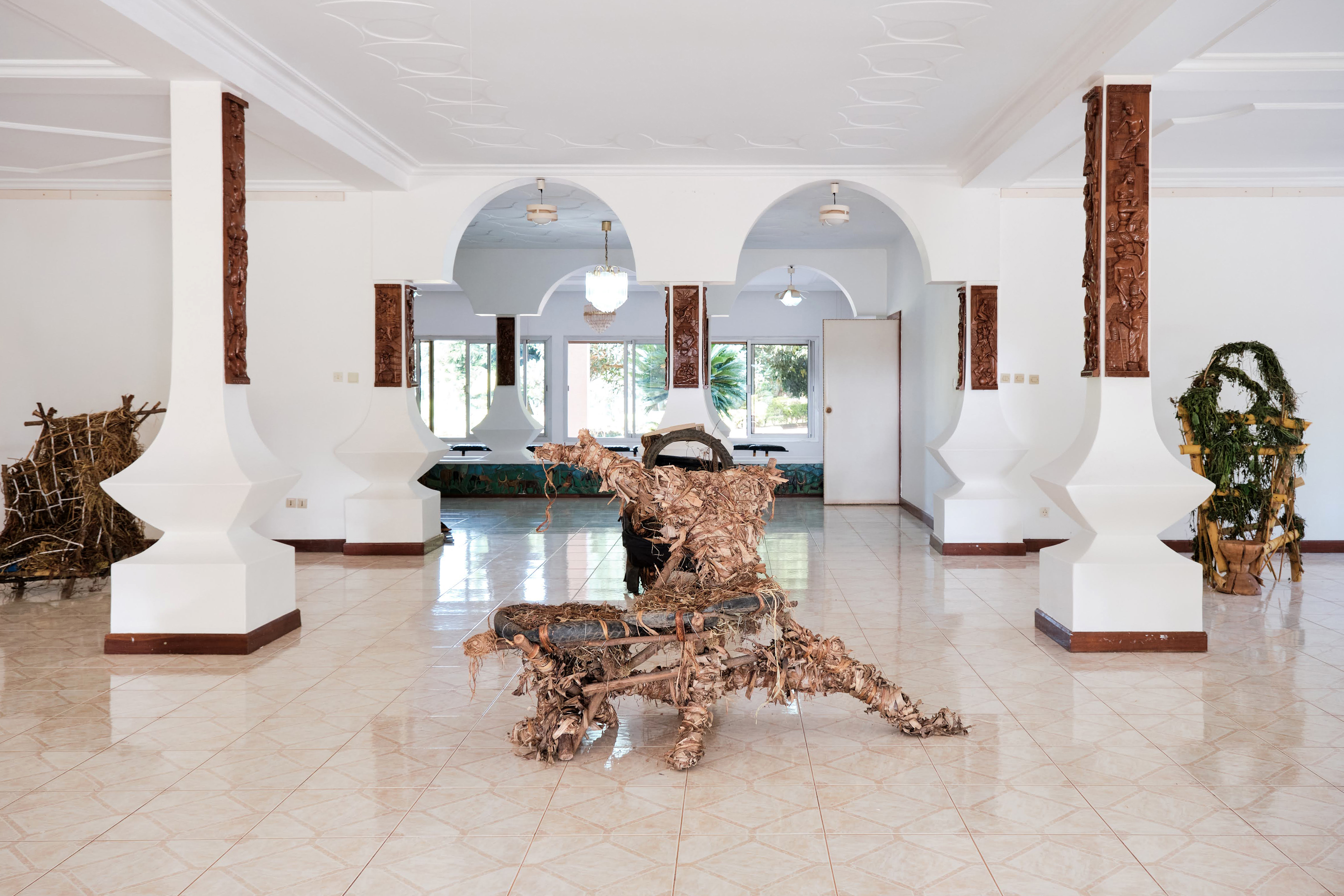
Four artists were tasked with creating symbolic objects such as totems or talismans aimed at addressing and helping reconcile people with the troubled history of the mansion, redefining the space's identity through artistic expression, and promoting a transition towards a more hopeful future.
The ground floor of the residence features the Ibisazi Designers Nyaybo collective (‘Ibisazi’ means ‘crazy’ in Kinyarwanda), known for their mystical and unconventional style, who were commissioned to design 50 chairs with complete creative freedom. The resulting ‘Power of the Inside’ is a collection of unique objects resembling living beings, crafted from recycled materials collected from their immediate surroundings.
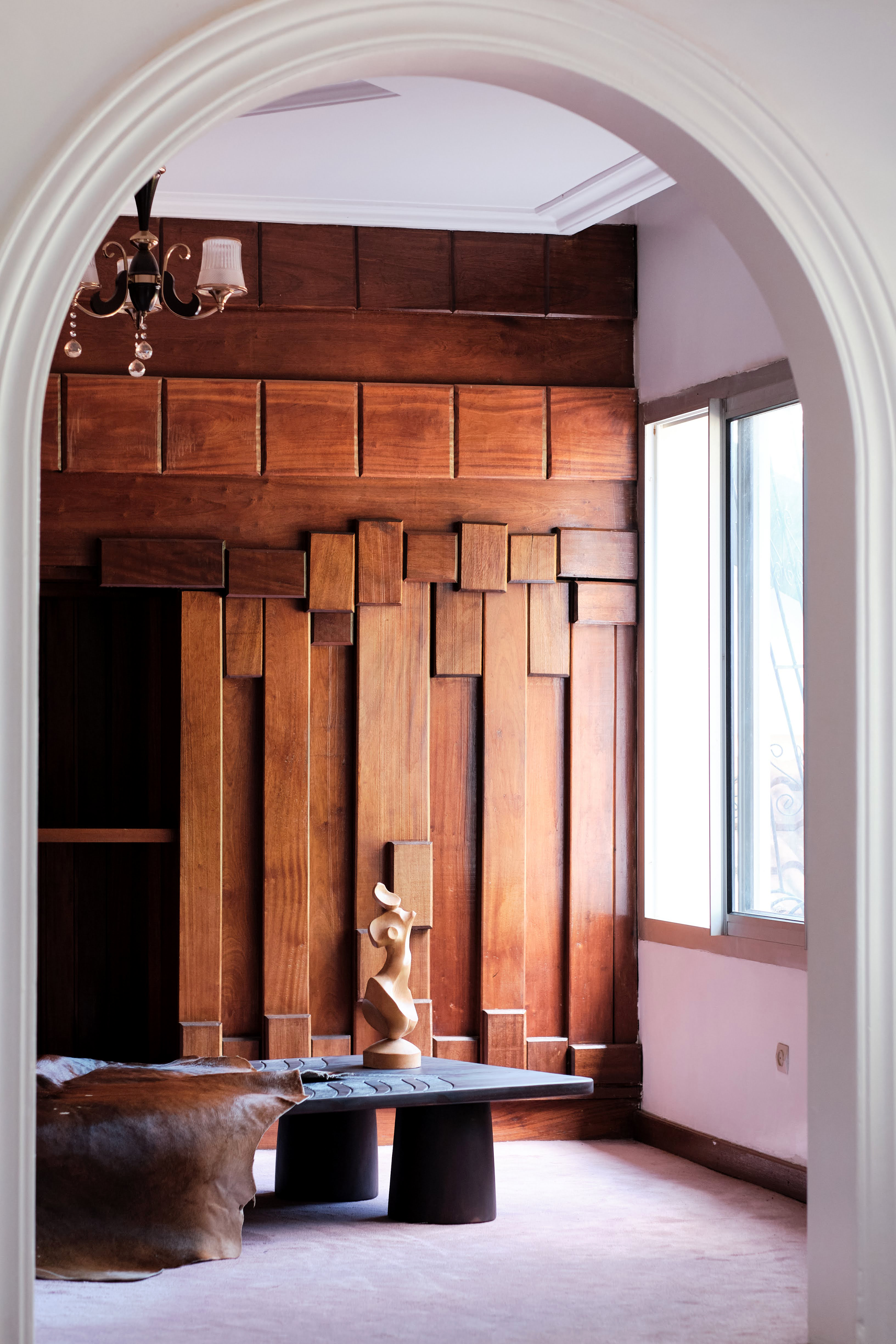
Floride Mukabageni’s 15 large-scale paintings constituted a significant portion of the exhibition on the second floor, which served as the residence's private resting areas. ‘This was her first attempt at painting on such a scale, as many Rwandan artists are self-taught and lack resources to produce work. Thanks to Christina and Bonita (Mutoni, the other co-founder), we presented them with an opportunity to express in a grander gesture. Her ‘Bedroom Stories’ series brings calmness and a unique sensuality to the spaces,’ Bellavance-Lecompte says.
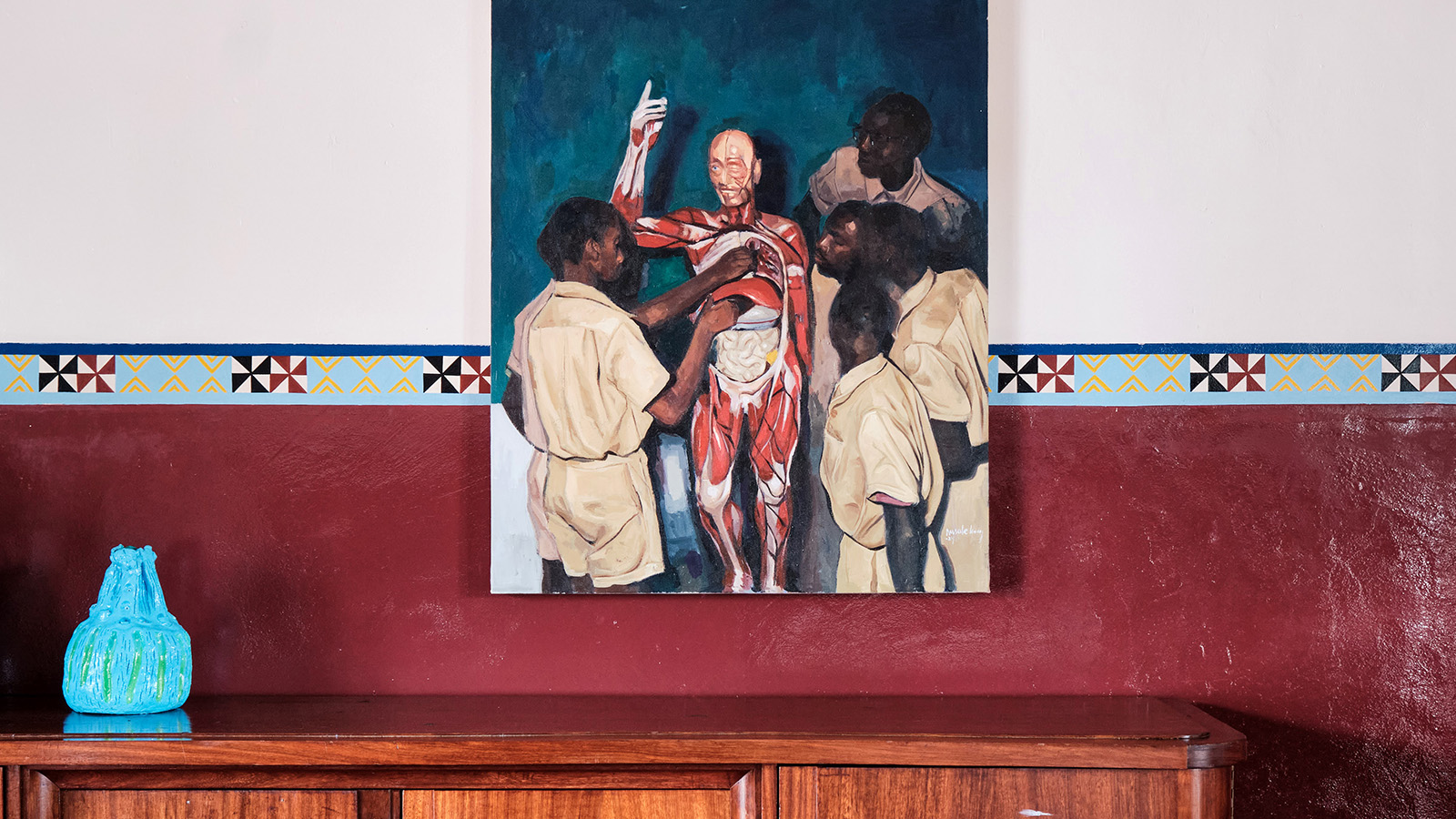
The final chapter, ‘Future: Possessions’, is located on Peace Heaven Island in the Twin Lakes of Musanze, in the northern part of the country. It begins with a scenic boat ride across the lake, adorned by Moses Turahirwa, founder of Rwandan fashion brand Moshions. As the island comes into view, visitors encounter an interactive installation by Bruce Engel, an architect from Kigali and New York and the founder of Be_Design.
‘Woven Together: A Bright Future’ consists of 100 swaying poles adorned with golden-yellow combed sisal, inspired by the traditional headdress of intore dancers. The architectural folly emphasizes the transient interaction between humans and their natural surroundings, encouraging reflection on the delicate balance between human activity and environmental conservation, serving as a contemplative space for considering our future actions.
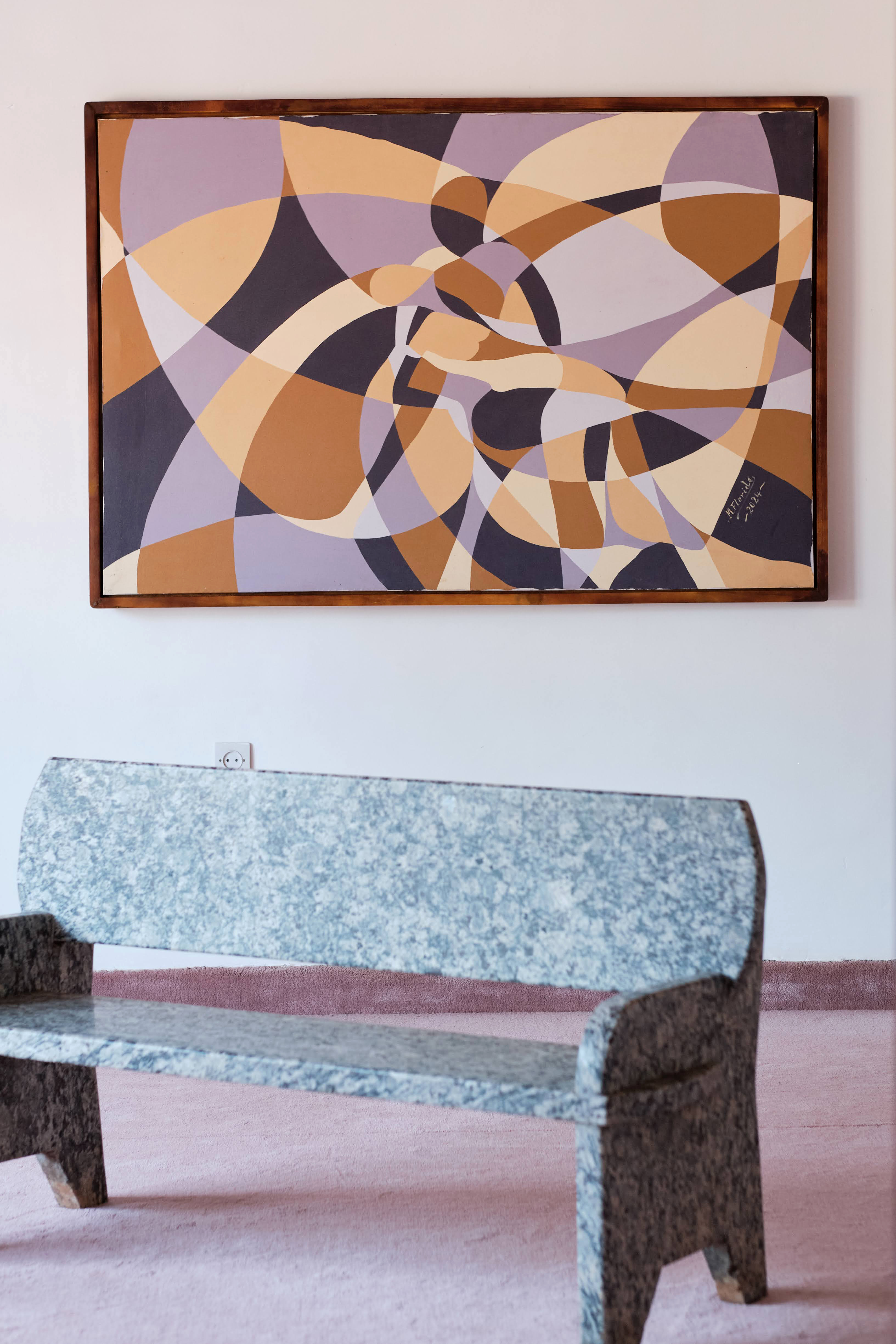
‘As we address the responsibility of balancing our human experiences with the notions of memory, we are mindful of the task entrusted to us to influence mindsets with this exhibition. Rwanda now has the opportunity to establish diverse structures to create its own cultural narrative. We hope Interlude Rwanda will be one of many future initiatives in the country to fully reintegrate education and practice, fostering sustainable and systemic cultural change.’ Bellavance-Lecompte says.
Interlude Rwanda is on view until October 25, 2024. interluderwanda.com







